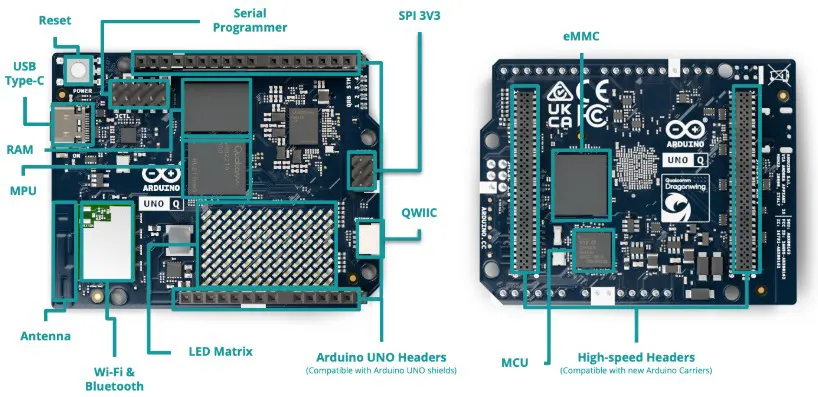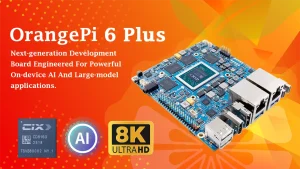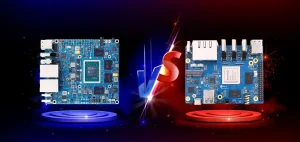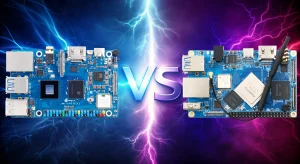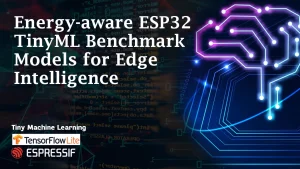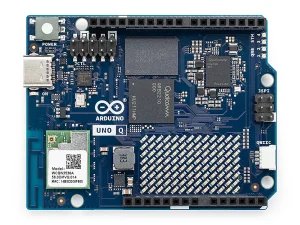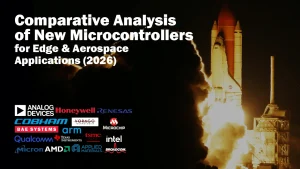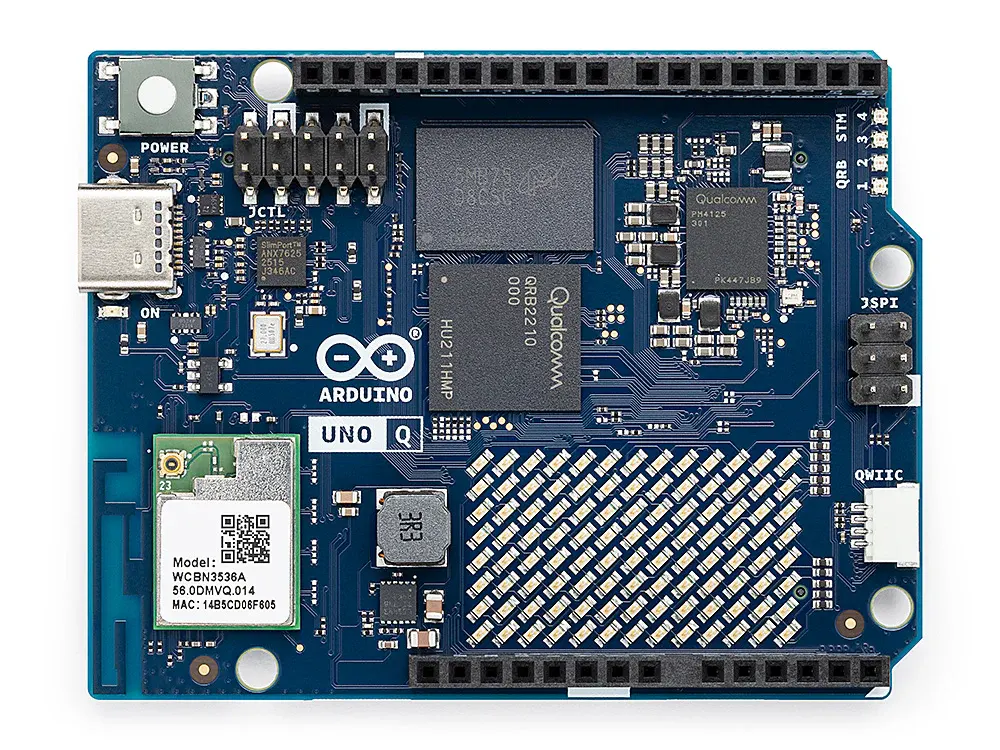
The UNO Q is Arduino’s newest hybrid board, designed to blend the power of a single-board computer with real-time microcontroller capabilities. Unlike classic Arduino boards, UNO Q pairs a Linux-capable processor with a microcontroller for deterministic control.
With this design, UNO Q targets projects that require both high-level computing (e.g. AI, image processing, network services) and low-level control (real-time I/O, sensor interfacing). It is ideal for advanced robotics, edge AI applications, vision + control systems, and next-gen IoT where performance and flexibility are both needed.
The release of the new models has sparked a common question among makers: what exactly is the difference in the Arduino UNO Q vs Arduino UNO R4 matchup?
What Makes the STM32U Microcontroller in UNO Q Special?
Dual-Brain Architecture: Real-Time + Linux
UNO Q uses a hybrid architecture combining a Qualcomm Dragonwing QRB2210 (running Linux/Debian) and an STM32U585 microcontroller for real-time tasks. The STM32U585 is based on the Arm Cortex-M33 core, operating up to 160 MHz, with 2 MB flash and approximately 786 kB SRAM.
Advantages Brought by STM32U in UNO Q
- Deterministic performance: The microcontroller handles time-critical I/O, sensor reading, and control loops without Linux interruptions.
- Separation of concerns: Linux side handles heavy workloads (vision, networking), while the MCU manages real-time control.
- Better memory and speed: Compared to older AVR-based Unos, STM32U offers far more memory, performance, and peripherals.
- Safety and robustness: The microcontroller can continue functioning even if the high-level processor crashes, making projects more resilient.
These features enhance UNO Q’s capabilities by enabling complex tasks (AI, vision, multimedia) alongside precise real-time control something traditional Arduino boards can’t achieve.
What Are the Connectivity Options Available in Arduino® UNO R4 WiFi and Q?
Before we dig into the spec table, a quick note: UNO R4 WiFi is built around a Renesas RA4M1 (Cortex-M4 @ 48 MHz) MCU for general control, and integrates an ESP32-S3 coprocessor for WiFi + Bluetooth connectivity. This dual-MCU approach allows the board to offload wireless tasks while the main MCU handles core logic.
Comparison Table: UNO Q vs UNO R4 WiFi
|
Feature |
Arduino UNO Q |
Arduino® UNO R4 WiFi |
|
Primary Microcontroller / Processor |
STM32U585 (Arm Cortex-M33, 160 MHz) + Qualcomm Dragonwing QRB2210 (Linux) |
RA4M1 (Arm Cortex-M4, 48 MHz) |
|
Secondary / Wireless MCU |
Linux side handles WiFi/Bluetooth via integrated SoC |
ESP32-S3 for WiFi/Bluetooth (ESP32-S3-MINI-1) |
|
Clock Speed |
MCU side: up to 160 MHz |
48 MHz on RA4M1 |
|
Memory |
STM32U585: 2 MB flash + ~786 kB SRAM Dragonwing: 2 GB LPDDR4 + 16 GB eMMC |
RA4M1: 256 kB Flash, 32 kB SRAM |
|
Connectivity |
Dual-band WiFi 5, Bluetooth 5.1 (via SoC) |
WiFi + Bluetooth via ESP32-S3; MCU handles CAN, DAC, OP AMP, etc. |
|
Power Consumption |
More power demand due to SoC + Linux + MCU |
More modest for MCU; additional cost for ESP32-S3 |
|
Form Factor / Size |
UNO-standard form (68.6 × 53.3 mm) with additional headers |
UNO-standard layout (68.85 mm width) |
|
I/O Pins & Peripherals |
Rich I/O: SPI, I2C, ADC, DAC, CAN, PWM, etc., many GPIOs accessible via headers |
14 digital I/O, 6 analog inputs, CAN, DAC, Qwiic, OP AMP, etc. |
|
Unique / Additional Features |
LED matrix, full Linux environment, video, camera support, multimedia |
On-board WiFi/Bluetooth, 12×8 LED matrix, Qwiic connector, ESP32 co-processor |
Which Board Is Better for IoT Applications?
It depends on the use case:
- If your project needs complex compute tasks, AI, video, or multitasking, UNO Q holds a clear advantage due to its Linux-capable side plus the STM32 real-time MCU.
- For standard IoT, WiFi-connected sensing, control, and home automation, UNO R4 WiFi offers a simpler, lower-power solution with built-in wireless support and a more modest cost.
Unified Development Environment: App Lab
App Lab introduces a next-generation integrated development environment (IDE) that delivers a truly unified development experience across both Linux® and real-time operating systems (RTOS). Preinstalled on the Arduino UNO Q, it streamlines cross-platform development by seamlessly integrating Arduino Sketches (C/C++), Python® scripts, and containerized AI/ML models into a single cohesive workspace. This allows developers to build, deploy, and manage multi-language, multi-runtime applications directly from one centralized interface—eliminating the friction between firmware development and high-level software integration.
Ready-to-Use Apps and Modular Bricks
The App Lab ecosystem includes a growing library of Arduino Apps self-contained, ready-to-deploy examples that demonstrate complete workflows for robotics, IoT, and AI-driven applications. Developers can also accelerate prototyping using Bricks, modular plug-and-play software and hardware components that simplify the integration of features such as sensors, connectivity stacks, motor control, and vision systems. These pre-built Bricks reduce setup time, enhance code reusability, and ensure consistent system performance.
AI-Enabled Functionality with Pre-Loaded Models
The Arduino UNO Q ships with a suite of pre-trained AI models preloaded within App Lab, optimized for low-power edge inference. These models enable advanced computer vision, audio recognition, and predictive maintenance capabilities, including:
-
Object and human detection for surveillance or robotics.
-
Anomaly detection for real-time sensor monitoring.
-
Image classification for industrial and environmental analysis.
-
Sound recognition for voice-based triggers or machine diagnostics.
-
Keyword spotting for natural voice control.
By combining on-device AI processing with App Lab’s integrated development tools, the Arduino UNO Q empowers developers to prototype and deploy intelligent, edge-optimized applications faster than ever before.
Conclusion
When comparing the UNO Q vs UNO R4 WiFi, the choice fundamentally hinges on the balance between classic simplicity and modern power. The UNO Q stands as the reliable successor to the revered UNO R3, perfect for beginners and Professionals projects where stable, basic functionality is paramount. In contrast, the UNO R4 WiFi represents a significant evolutionary leap, boasting a powerful 32-bit processor, dramatically increased memory, and built-in connectivity via Wi-Fi and Bluetooth LE. This transforms the platform, enabling complex computations, cloud data logging, Linux with STM32 MCU and IoT applications that were previously difficult or impossible.
FAQs
-
What are the main differences between Arduino UNO Q and Arduino® UNO R4 WiFi?
- UNO Q combines a dual-brain architecture (Linux + STM32 MCU) for high-level and real-time tasks, while UNO R4 WiFi uses a single MCU (RA4M1) plus an ESP32-S3 module for wireless connectivity.
-
Is Arduino UNO Q suitable for beginners?
- It can be used by advanced beginners, but its hybrid architecture may introduce more complexity; UNO R4 WiFi might be more approachable at first.
-
What projects can I build with Arduino® UNO R4 WiFi?
- IoT sensors, home automation, wearables, remote monitoring, and simple robotics thanks to its WiFi/Bluetooth integration.
-
How does the STM32U Microcontroller improve power efficiency?
- The STM32U585 offers power modes, optimized architecture, and separation from the Linux side to handle low-power tasks without needing the Linux SoC running.
-
Can I use existing Arduino libraries with Arduino UNO Q?
- Yes, the Arduino MCU subsystem supports many existing libraries. However, full use of the Linux side may require more Linux/embedded programming beyond classic Arduino libraries.
-
What are the best use cases for Arduino® UNO Q?
- IoT projects, smart devices, remote sensors, WiFi-controlled gadgets — where wireless connectivity and moderate compute suffice.
-
How do I choose between Arduino UNO Q and Arduino® UNO R4 WiFi?
- Base your choice on your compute needs, power constraints, wireless requirements, and whether you need a full OS vs embedded control.
-
What programming languages are compatible with Arduino UNO Q?
- You can use Arduino sketch C/C++ on the MCU side, Python or shell scripts on the Linux side, and possibly AI frameworks for high-level processing.
-
Are there any limitations of Arduino® UNO R4 WiFi?
- Limited MCU speed (48 MHz) for heavy algorithms, shared resource overhead with ESP32 module, and constrained memory relative to Linux boards.
-
What community resources are available for Arduino UNO Q users?
- Arduino’s official documentation, community forums, GitHub examples, growing support as the board is adopted, and hybrid tutorials combining Linux and real-time embedded code.
